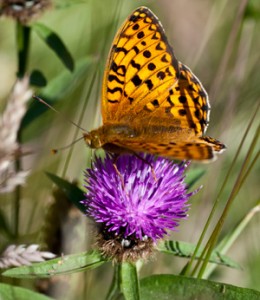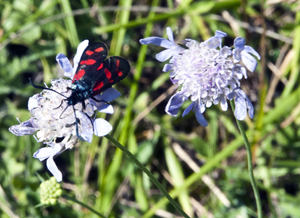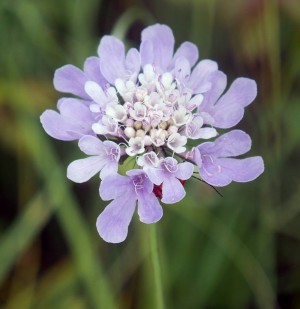Creating a wild flower area

Should you wish to create a wild flower area on your land (be it a field, a woodland or a part of your garden), much will depend on the soil and present condition of the land. If it is rich / fertile grassland, then it may be quite difficult for wild flowers to establish themselves - due to the competition from grass and other vigorous species.
One approach is to remove patches of grass, and then either plant pot-grown wild flowers, or sow lots of wild flower seeds on these bare patches. It is a good idea to use locally grown plants or locally collected seeds. Information can be found at the excellent Flora locale website on the local provenance of plants and seeds. Flora locale also has a very useful on-line library, with many downloadable pdf files.
Grass can easily begin to dominate again, particularly if the soil is fertile.  Indeed, a fertile soil is less likely to support a diverse and species-rich population. However, an ‘infertile’ or poor soil can often generate and sustain a wildflower rich and mixed population. If the area is cleared of grass and then seeded with low growing grass species and meadow species such as Meadow Cranesbill, Field Scabious, Meadow Buttercup, Bugle, and Yarrow, then there is the chance that a self- sustaining system may develop. These and other plants vary considerably in their ability to survive in different soils, so the range of species that persist will change from one area to another. Another approach to creating a wild flower area is to use a specially prepared wildflower turf.
Indeed, a fertile soil is less likely to support a diverse and species-rich population. However, an ‘infertile’ or poor soil can often generate and sustain a wildflower rich and mixed population. If the area is cleared of grass and then seeded with low growing grass species and meadow species such as Meadow Cranesbill, Field Scabious, Meadow Buttercup, Bugle, and Yarrow, then there is the chance that a self- sustaining system may develop. These and other plants vary considerably in their ability to survive in different soils, so the range of species that persist will change from one area to another. Another approach to creating a wild flower area is to use a specially prepared wildflower turf.
Any area will need attention and 'aftercare' in order to prevent the re-establishment of grass, docks and thistles. This can be done through grazing, cutting, mowing or strimming.
The re-introduction of the large blue butterfly was dependent on the ‘re-creation’ of special meadows in the South West, through careful management and grazing.
More information and advice on creating wild flower areas can be found at both the Lincolnshire Wildlife Trust and the flora locale website
Comments are closed for this post.
